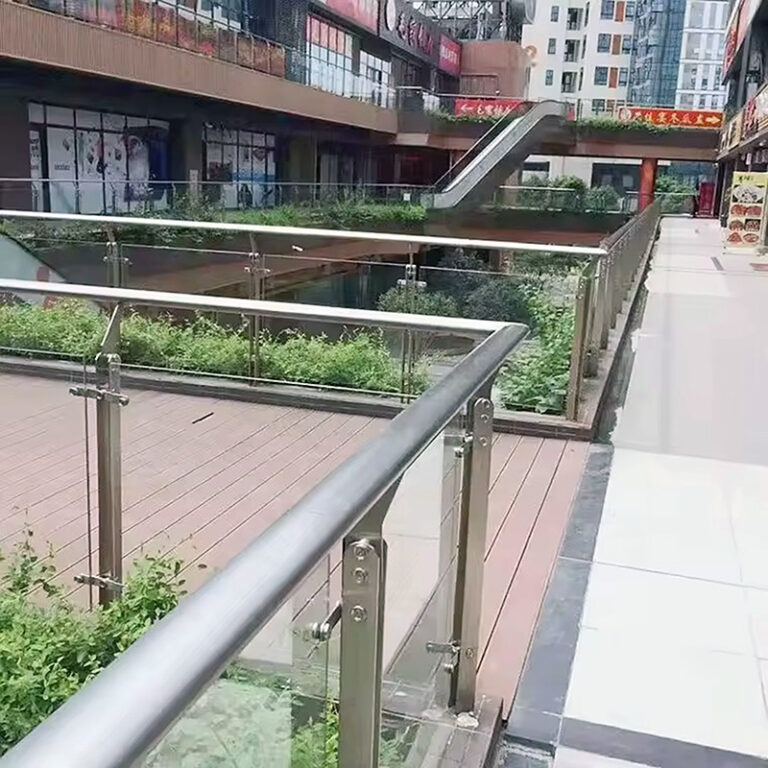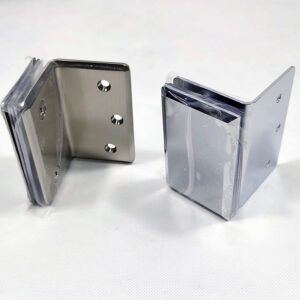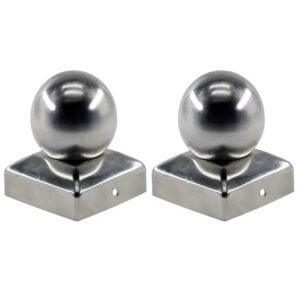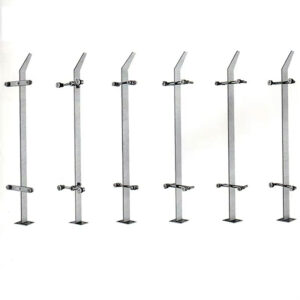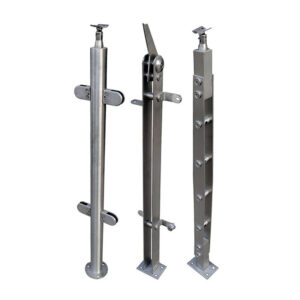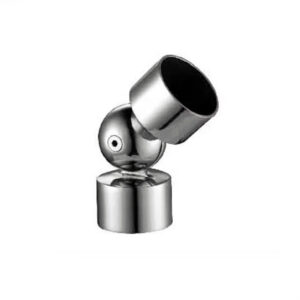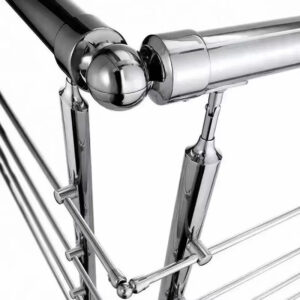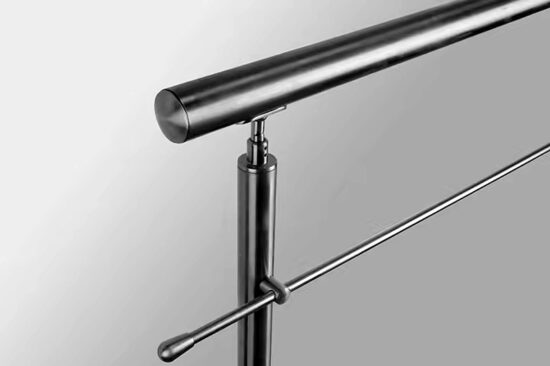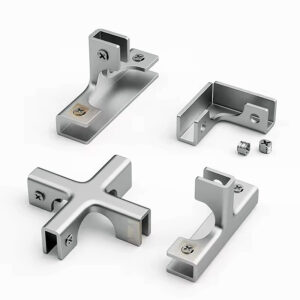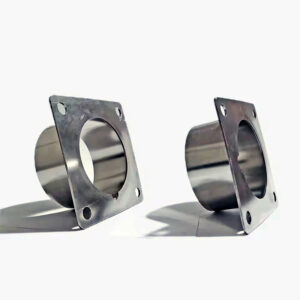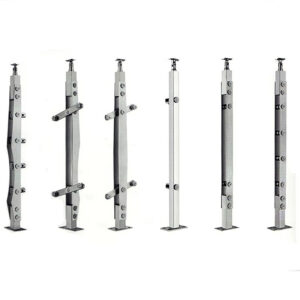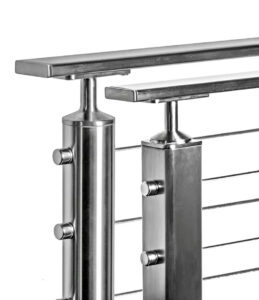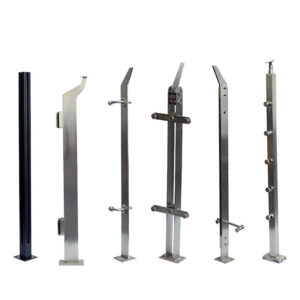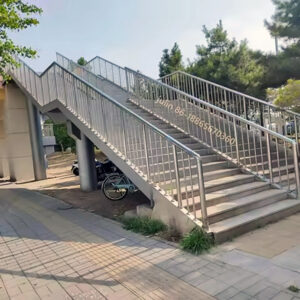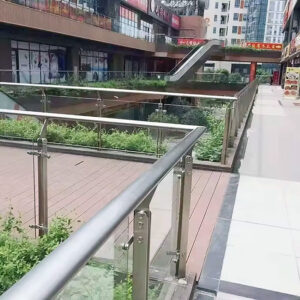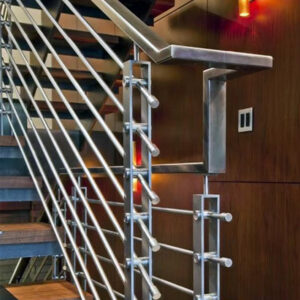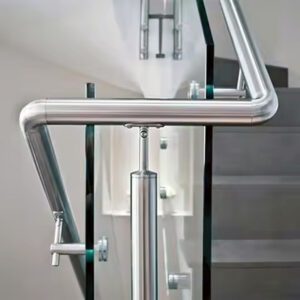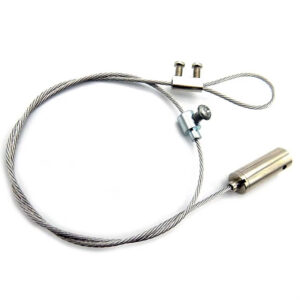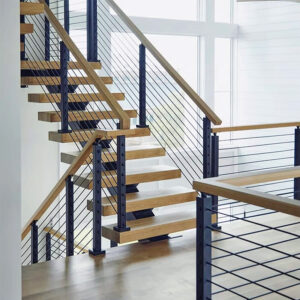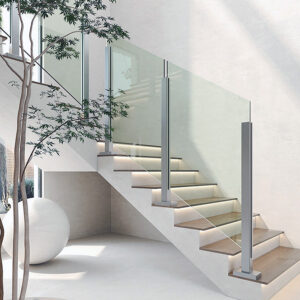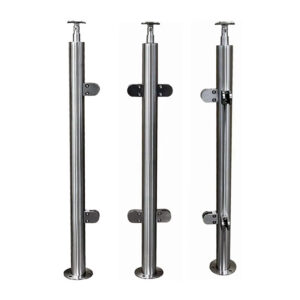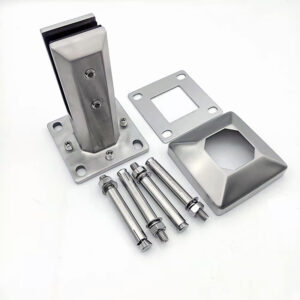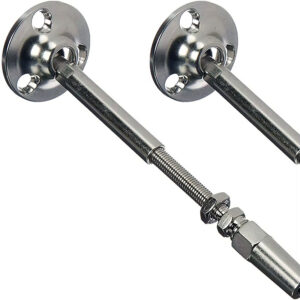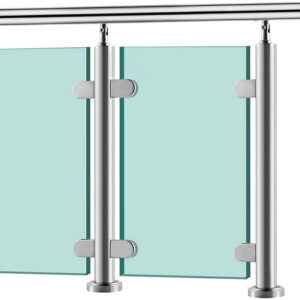After 23 years in stainless steel railing manufacturing, we know the real challenge isn’t finding balcony railing systems—it’s finding ones that actually deliver on their promises. Whether you’re dealing with coastal corrosion, complex code requirements, or tight installation schedules, balcony railing systems 316 need to perform reliably from day one. This guide covers what works, what doesn’t, and how to choose systems that solve problems instead of creating them.
Complete Balcony Railing Systems 316: Components That Integrate
Balcony railing systems 316 require more than just picking stainless steel posts and hoping everything fits together. Real system integration means components designed to work as a complete solution.
Core System Components
Post and Rail Systems: 316 stainless posts with integrated mounting systems, continuous rails, and standardized connections. These eliminate field welding while maintaining structural integrity. Wall-mount, surface-mount, and through-deck options handle different balcony configurations without custom fabrication.
Glass Panel Integration: Structural glazing clamps, base shoes, and continuous handrails designed specifically for 316 stainless applications. The hardware maintains glass panel alignment while handling thermal expansion—critical for balcony installations exposed to temperature swings.
Cable Railing Components: Marine-grade 316 fittings, tensioners, and through-post systems. Cable systems reduce wind load on balconies while meeting code requirements for opening limitations. Proper tensioning hardware prevents cable sag that creates compliance issues.
Infill Panel Systems: Perforated panels, vertical pickets, and horizontal rail systems in 316 stainless. These provide design flexibility while maintaining the corrosion resistance essential for marine grade balcony railings.
Material Grade Selection Reality
316L stainless contains molybdenum for enhanced corrosion resistance—essential within 5 miles of saltwater or in industrial environments. Standard 304 stainless works for most inland residential applications but fails prematurely in marine conditions.
“316L stainless demonstrates 3-4 times greater corrosion resistance in chloride environments compared to standard grades.” —American Iron and Steel Institute
Balcony railing fabrication 316L marine applications require understanding the difference. 316L’s lower carbon content prevents carbide precipitation during welding—maintaining corrosion resistance at weld joints where failure typically starts.
Technical Specifications Table
| Component Type | Material Grade | Load Capacity | Installation Method | Typical Application |
|---|---|---|---|---|
| Structural Posts | 316L SS | 200 lbs concentrated | Surface/embedded mount | Marine balconies |
| Handrail Systems | 316 SS | 50 lbs/linear ft | Wall/post mount | All environments |
| Glass Clamps | 316 SS | 150 lbs per clamp | Structural glazing | Wind-exposed areas |
| Cable Fittings | 316L SS | 2000 lbs tensile | Through-post/surface | Modern residential |
Real Project Applications: What Works in Practice
Marine and Coastal Projects
Commercial balcony systems 316L for oceanfront condominiums require different engineering than inland applications. Salt spray creates ongoing corrosion challenges that 304 stainless simply cannot handle long-term.
Recent coastal projects show 316L systems maintaining structural integrity and appearance after 10+ years of salt spray exposure. Standard 304 systems in similar environments typically show surface corrosion within 2-3 years and structural issues by year 7-8.
Installation Reality: Marine projects require additional attention to drainage details and dissimilar metal contact. Proper gaskets and isolation prevent galvanic corrosion that compromises system integrity.
High-Rise Residential Applications
Multi-story balcony installations benefit from standardized custom balcony components that reduce field labor while meeting varying architectural requirements. Modular systems allow contractors to inventory common components while handling design variations through standardized connection methods.
“Modular railing systems reduce installation time by 30-40% compared to fully custom fabrication.” —National Association of Construction Contractors
ODM balcony railing manufacturing capability means standard products can accommodate specific architectural details without starting from scratch. This approach balances cost efficiency with design requirements.
Commercial and Institutional Projects
Office buildings, hotels, and public facilities require balcony railing systems 316 that meet accessibility codes while handling high traffic loads. ADA compliance, wind load requirements, and maintenance access all factor into system design.
Successful commercial installations integrate lighting, drainage, and maintenance access into the railing system design rather than treating these as afterthoughts.
Installation and Technical Support
Modular Installation Advantages
Pre-engineered components reduce field assembly time and eliminate many potential error points. Standardized connections ensure components fit properly without field modifications that compromise structural performance.
Field Assembly Process: Components arrive pre-fabricated with clear assembly sequences. Standard hardware eliminates special tool requirements while maintaining structural connections that meet code requirements.
Quality Control Benefits: Factory fabrication provides consistent tolerances impossible to achieve with field welding. This precision ensures proper fit-up and eliminates the rework that delays project completion.
Engineering Support That Actually Helps
Twenty-three years of manufacturing experience means we understand where installations typically encounter problems. Our technical support addresses real-world challenges rather than just providing generic installation guides.
Design Assistance: Load calculations, code compliance verification, and connection details specific to your project requirements. This front-end support prevents costly field discoveries.
Installation Troubleshooting: Direct access to engineers who understand both manufacturing tolerances and field realities. Problems get solved quickly rather than turning into project delays.
▶ Connect with Our Technical Team ◀
Performance Comparison Matrix
| System Type | 304 Stainless | 316 Stainless | 316L Marine Grade | Aluminum Alternative |
|---|---|---|---|---|
| Coastal Performance | Poor long-term | Good | Excellent | Moderate |
| Installation Cost | Lowest | Moderate | Higher initial | Low-moderate |
| 20-Year Cost | High maintenance | Moderate | Lowest total | Variable |
| Code Compliance | Standard | Standard | Exceeds requirements | Meets minimum |
Frequently Asked Questions
Q: When is 316L stainless worth the additional cost for balcony railings?
Within 5 miles of saltwater, industrial environments with chemical exposure, or anywhere long-term maintenance access is limited. The 15-20% material premium typically pays back through reduced maintenance and longer service life.
Q: Can different manufacturers’ components be mixed in a single installation?
Mixing components creates potential problems with fit-up, finish matching, and warranty coverage. Standardized systems from a single manufacturer eliminate these complications while ensuring consistent performance.
Q: What’s realistic installation time for modular balcony railing systems?
Pre-engineered systems typically install at 15-20 linear feet per day for standard configurations. Complex geometries or access limitations can reduce this rate, but modular components still install faster than field-fabricated alternatives.
Q: How do 316 stainless systems handle thermal expansion in balcony applications?
Proper system design includes expansion joints and connection methods that accommodate thermal movement. Long rail runs require expansion provisions every 40-50 feet to prevent stress concentration.
Q: What maintenance is required for 316 stainless balcony railings?
Annual washing with mild detergent removes surface deposits. Marine environments may require more frequent cleaning, but the material itself requires no protective coatings or refinishing.
Q: Are modular systems as strong as custom-welded railings?
Properly-engineered mechanical connections often exceed welded joint strength while eliminating heat-affected zones that compromise corrosion resistance. Factory-controlled fabrication provides consistent quality impossible with field welding.
▶ Discuss Your Specific Requirements ◀
Choosing the Right Manufacturing Partner
ODM balcony railing manufacturing capability means working with a partner who understands both standard products and custom requirements. Esang Metal combines 23 years of manufacturing experience with engineering support that addresses real project challenges.
What Matters in Manufacturing Partnership
System Integration Experience: Understanding how components work together prevents field problems that delay projects and increase costs. Manufacturing experience translates into products that actually work as designed.
Technical Support Access: Direct communication with engineers who understand both manufacturing capabilities and field installation realities. This support prevents small problems from becoming project delays.
Quality Consistency: Factory-controlled processes deliver consistent tolerances and finish quality. This precision ensures components fit properly and perform as specified over time.
Supply Chain Reliability
Inventory Management: Established manufacturers maintain component inventory that supports both standard orders and emergency requirements. This reliability prevents project delays while supporting efficient contractor inventory management.
Delivery Coordination: Experience coordinating deliveries with construction schedules ensures materials arrive when needed rather than creating storage and handling problems on job sites.
“Reliable suppliers eliminate the project delays that turn profitable jobs into problems.” —Construction Industry Institute
Making the Decision: Performance vs. Budget Reality
Balcony railing systems 316 represent an investment in long-term performance rather than minimum first cost. The decision should factor total project cost including installation efficiency, long-term maintenance, and replacement avoidance.
Initial Cost Considerations: 316 stainless costs 15-20% more than 304 grade but eliminates premature replacement in corrosive environments. Modular systems may cost more initially but reduce installation labor significantly.
Long-term Value Analysis: Marine-grade materials and proper system design eliminate the maintenance and replacement costs that make cheap systems expensive over time.
▶ Get Detailed Specifications and Pricing ◀
The choice of balcony railing systems 316 should be based on realistic performance requirements and total project cost rather than initial material cost alone. Twenty-three years of manufacturing experience has shown us that systems designed and built properly the first time provide the best value for contractors, building owners, and occupants alike.
